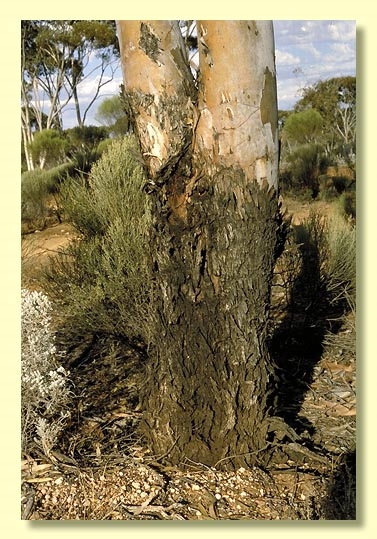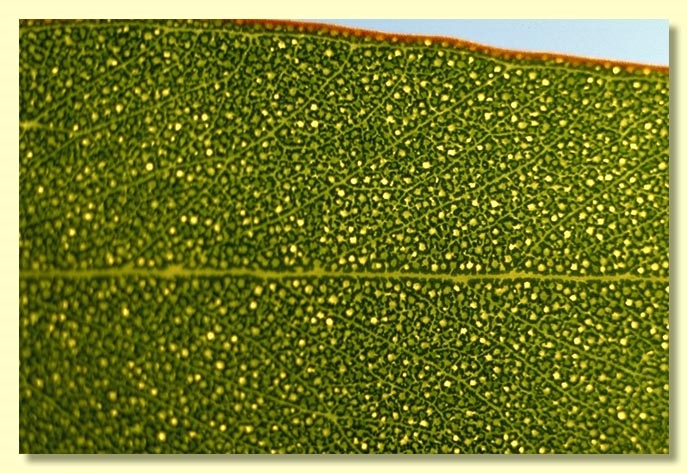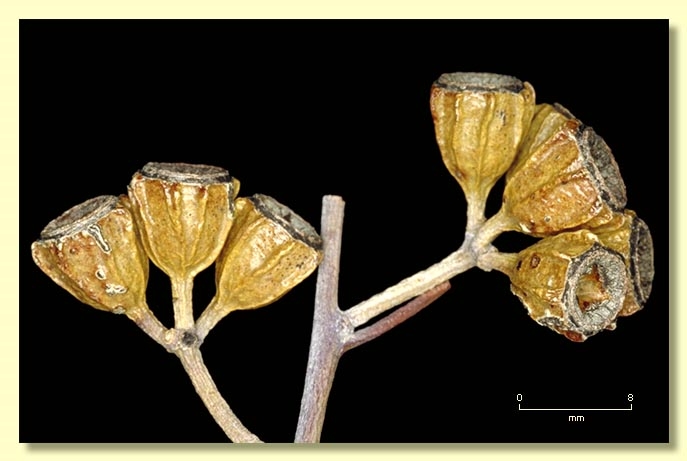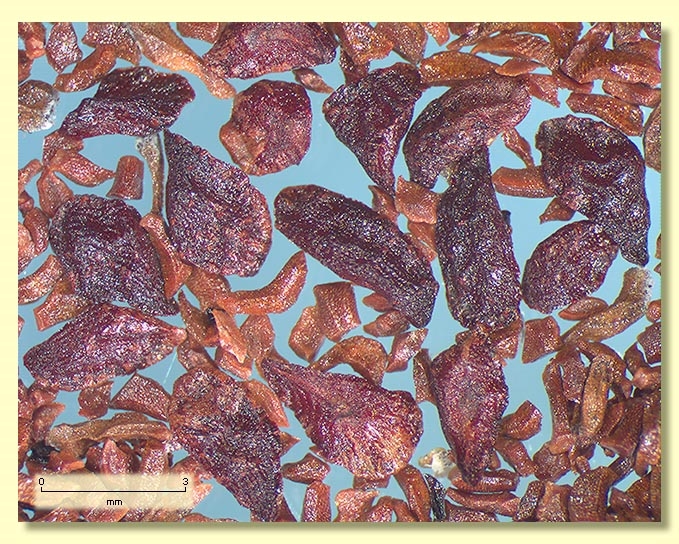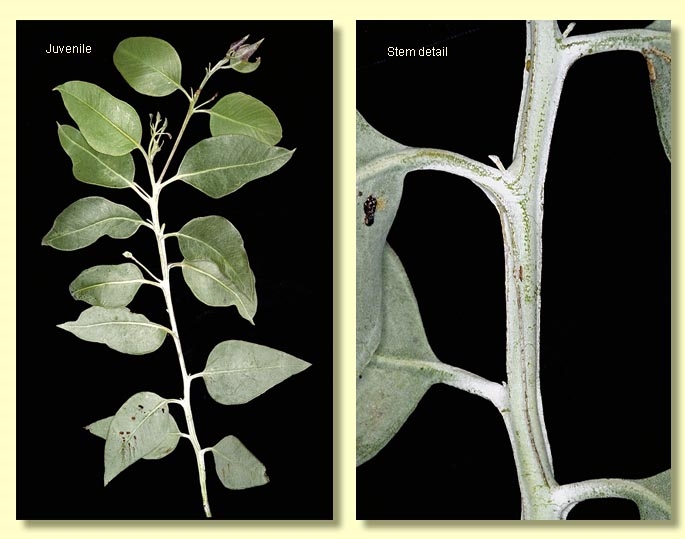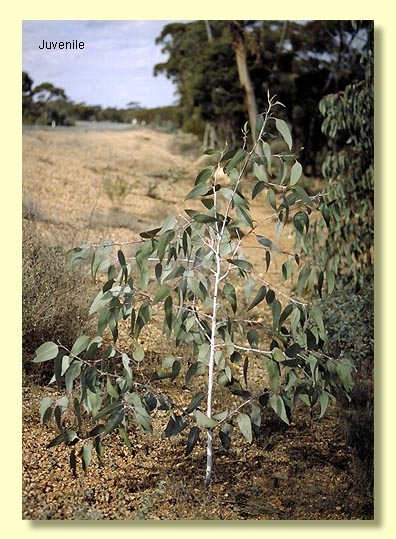Euclid - Online edition
Eucalyptus lesouefii
Eucalyptus | Symphyomyrtus | Dumaria | Rufispermae
Bark rough, black and crumbly to coarsely flaky on lower trunk, smooth above, coppery orange to creamy grey.
Branchlets commonly glaucous; with oil glands in the pith.
Juvenile growth (coppice or field seedlings to 50 cm): stems square in cross-section and often winged; juvenile leaves always petiolate, opposite for several nodes then alternate, ovate, 9–13 cm long, 4.5–7 cm wide, glaucous, becoming green and glossy as a sapling.
Adult leaves alternate, petioles 1.2–2.5 cm long; blade lanceolate to narrowly lanceolate, sometimes falcate, 8.8–18.7 cm long, 1–2.7 cm wide, base tapering to petiole, margin entire, apex acute, concolorous, at first slightly glaucous, soon dark green, glossy, side-veins at an acute or wider angle to midrib, reticulation dense to very dense, intramarginal vein remote from margin, oil glands numerous, intersectional.
Inflorescence axillary unbranched, peduncles 0.8–2 cm long, buds 7 or ?9 per umbel, pedicellate (pedicels 0.2–0.8 cm long). Mature buds pyriform to more or less diamond-shaped (1.1–2.2 cm long, 0.6–1.2 cm wide), heavily ribbed, usually glaucous, scar present, operculum beaked (0.6–1.5 cm long), stamens inflexed, anthers cuboid to wedge-shaped, versatile, dorsifixed, dehiscing by longitudinal slits, style long and straight, stigma tapering, locules 4(5), the placentae each with 4 vertical rows of ovules. Flowers white.
Fruit pedicellate (pedicels 0.2–0.7 cm long), cupular to slightly campanulate, 0.6–1 cm long, 0.8–1.4 cm wide (incl. ribs), ribbed longitudinally, often glaucous, disc descending or level, valves 4(5), near rim level.
Seeds reddish brown and glossy, 1.5–5.5 mm long, flattened-ovoid and often angular in outline, dorsal surface slightly reticulate, hilum ventral.
Cultivated seedlings (measured at ca node 10): cotyledons reniform; stems square in cross-section, sometimes winged also, glaucous; leaves always petiolate, opposite for 3 to 5 nodes then alternate, ovate, 5–9 cm long, 2.5–5 cm wide, glaucous.
Flowering has been recorded in November.
A mallet endemic to the goldfields area of Western Australia, from about Leonora and Lake Minigwal in the north, east to Cundeelee and south to the Fraser Range and Norseman.
In the classification of Brooker (2000) Eucalyptus lesouefii belongs in Eucalyptus subgenus Symphyomyrtus section Dumaria having these features: buds initially with two opercula the outer shed early, stamens strongly inflexed, ovules in 4 rows on the placentae and cotyledons reniform. Within section Dumaria the species belongs to a large sub-group of closely related species (series Rufispermae, 37 described species and subspecies) diagnosed by glandular pith in the branchlets, anthers cuboid to wedge-shaped, versatile, and by the reddish brown and glossy, flattish seeds which are unique to the series.
Eucalyptus lesouefii is easily distinguished in the field by the habit, bark and the juvenile growth. The bark is thick, rough and black on the base of the trunk and the adult leaves soon become glossy olive-green. Saplings and seedlings are often seen and have conspicuously glaucous stems and branchlets and grey pendulous leaves. Within its distribution E. lesouefii is easily distinguished from other trees in series Rufispermae, viz. E. clelandii, E. fraseri, E. georgei, E. pterocarpa, E. tenuis, E. polita and E. woodwardii, by the combination of the above characters and prominently ribbed glaucous buds and fruit.


